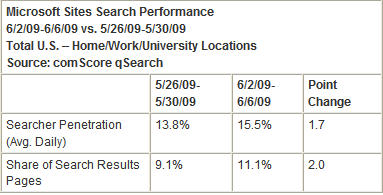Less than six degrees of social networking and Web 2.0 goodness

I was at the Under the Radar event last week, which showcases Web 2.0 companies, meaning they have something to do with consumers, multimedia data types, social networking, RSS, AJAX drag and drop, some Flash, mashups, attitude and fuzzy business models. It is a wave, with some froth and profligate VC investing, of innovation built on top of the previous generation, just as in other industries, with many products and services crowding into the same space.
Every product or service is fewer than six degrees away from other products and a perhaps few more degrees distant from adjacent categories, such as photo and video sharing to social networks. MySpace meets YouTube meets Podomatic meets Flickr meets Facebook meets Google APIs meets Yahoo 360 meets Imeem meets Vox meets the giant Live and MSN Spaces meets Dabble meets Xanga meets TagWorld meets LinkedIn meets Digg meets the new AIM meets X, Y, Z.
As an example of the newer breed of social networking sites, Multiply, allows users to share photos, blogs, videos, music , etc. with their social network, receive alerts whenever something new appears, and provides somewhat granular controls over who can see what piece of information.
In the the last few days, I have heard about KickApps, a 'white box' social networking platform; iBloks, a 3-D environment for sharing and playing with rich media and games; MOG, a music-based social network; Markaboo, a new social bookmarking service; Boompa, MySpace for car enthusiasts; NooZ, a news aggregation service with social features (voting, commenting, sharing, etc.) for the MySpace crowd; and Q121.com , a new social networking site for cell phones.
Wikipedia also has an incomplete list and a parade of social networking influenced products parade through TechCrunch and Rafe Needleman's blog.

Fred Stutzman points to several other up and coming social networking services: Cyworld (20 million daily visitors in South Korea), Bebo (20 million registered users, mostly UK), Hi5 (40 million users in India and the EU), Faceparty (6 million users, UK), XuQa (1 million users).
But something deeper inside the wave is forming beyond social networking infused products multiplying like mice.
Some of this gelled for me during a meeting with Fred Krueger and Evan Rifkin of TagWorld. The startup is building a comprehensive communications and media platform, not just a social networking site with profiles, buddy lists and photo sharing. Krueger says his goal is to allow users to easily build complex Web sites with sharing and a social network as the underlying fabric.
The so-called architecture of participation is slowly gestating in the bellies of hundreds of startups and established players, and the social Web, made by humans for humans, is taking shape on top of the grid. Sharing and collaboration is not an afterthought bolted onto email or deployed in a separate server for workflow.
Marc Canter has called this new framework of the Web a "people aggregator," and it is baked into the services from the ground up, but not a walled garden as in the services listed above. Social intelligence, the so called wisdom of the crowds, can be harnessed to make the Web more useful.
The most promising sites based Web 2.0 and social networks are those where the structure emerges over time and the results of interaction are more persistent, according to Andrew P. McAfee, an associate professor with the Technology and Operations Management Unit at Harvard Business School. "Wikipedia needed structure over time, for arbitration, tracking changes and making decisions, but it didn't presume to know what the problems are or how to solve them in advance," McAfee told me.
We have seen lately how technology that got its start among consumers (the Web, instant messaging, wikis, blogs) has seeped into corporations. In many cases, the users, not IT executives, sanction new Web services by popular demand to the bane of those concerned about security and regulatory compliance.
The social Web will be the next technology to gain traction in enterprises. They already have collaboration software beyond email, but it is often clunky, expensive and earns low adoption rates among users. "It's not in the DNA of companies, such as IBM and Microsoft, or people who buy their products, to radically embrace services that don't have any structure up front," McAfee said. "But I would be surprised if they didn't incorporate 'enterprise 2.0' features."
Many corporations are experimenting with wikis, but that is the tip of the proverbial iceberg. Corporations better get ready for the invasion of the social networks and the social Web...
See also:
Social freeloaders: Is there a collective wisdom?
Social media–the new growth hormone